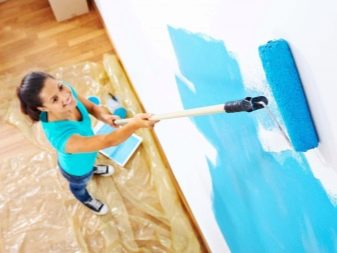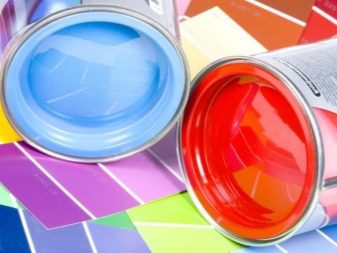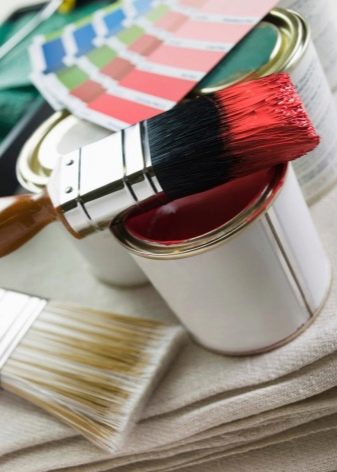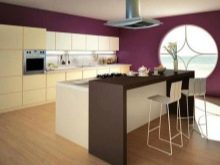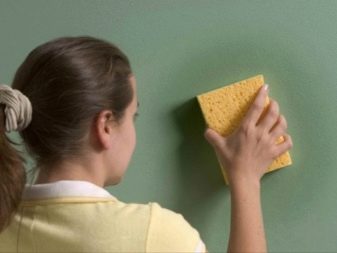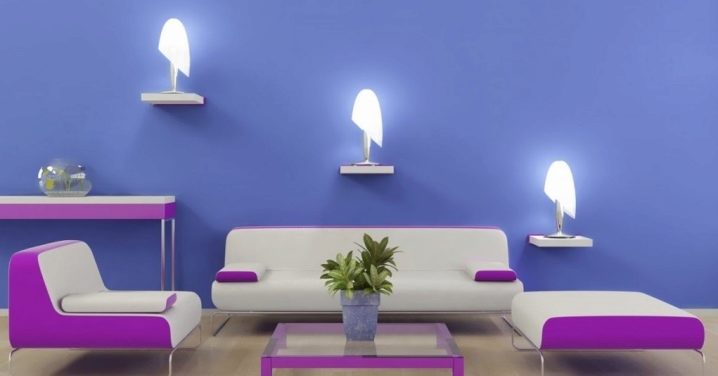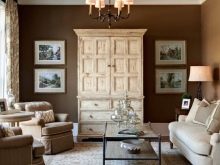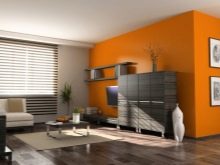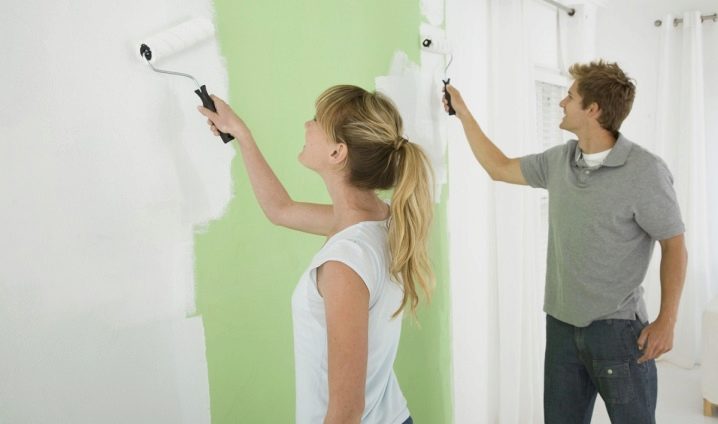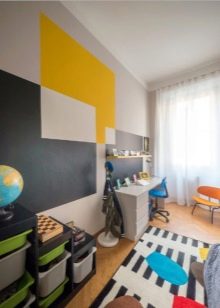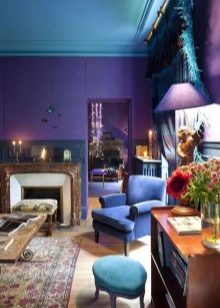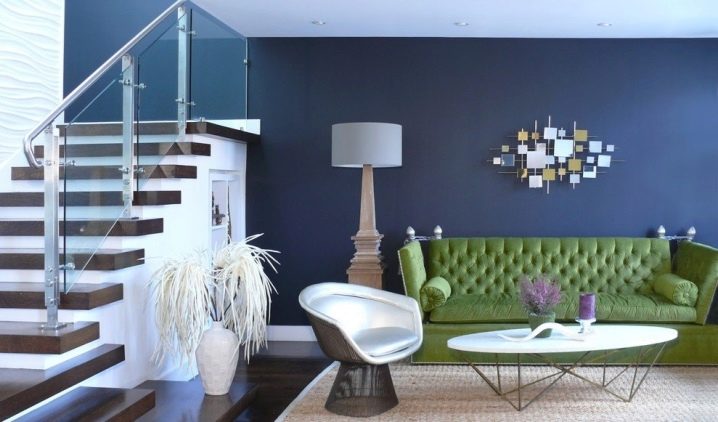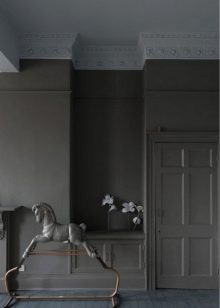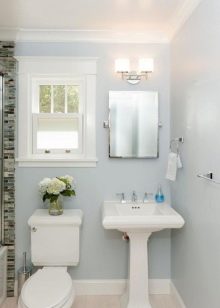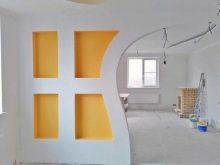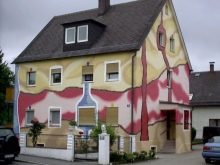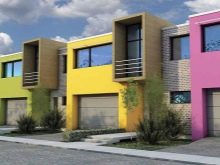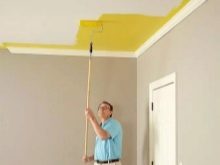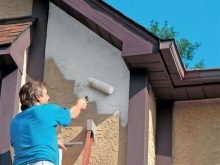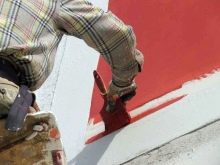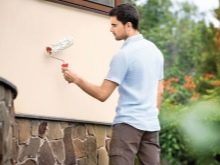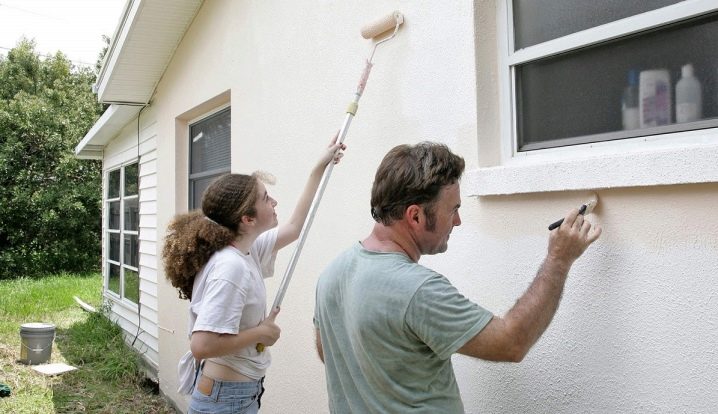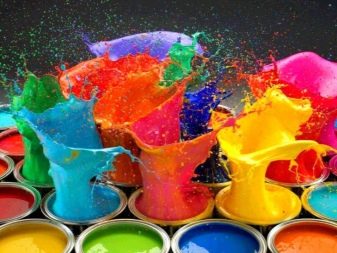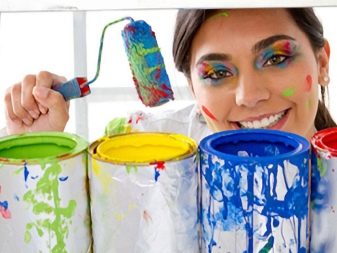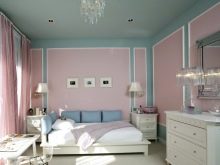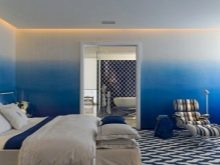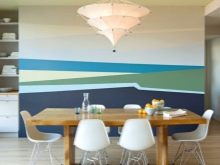Water dispersion acrylic paint: pros and cons

Any repair work requires a competent approach to the choice of materials and tools. Most often, paint is used to make any surface presentable. Recently, the most popular water-dispersion acrylic paint. But before acquiring, everyone wonders if the paint will last for a long time and is it safe for human health? In order to answer these and other questions, it is necessary to explore all the advantages and disadvantages of this type.
Special features
Acrylic paint belongs to a large water dispersion group and is a suspension of fine solids in a liquid solution.The separation within this group is almost arbitrary, since its solvent is water. Any paint of this type is a thick substance consisting of different components, due to which it acquires certain properties.
The composition of water-dispersion paint includes elements involved in the formation of a special film on the surface, carrying a protective function. In addition, it contains fillers, additives and coloring pigments. Fillers can have both a natural origin, and a synthetic basis. Thanks to them, the paint acquires certain properties. The pigment content gives the dye the desired color or shade, and additives improve the properties of the paint.
The difference between the different types of this group is in the binding components, the scope and the price.
Acrylic water-dispersion paint differs from other types of this group in the presence of polyacrylates. In addition, it contains copolymers directly involved in the formation of a film that protects the surface. This film is vapor-permeable, which means that the material under it “breathes”.The formation of mold and the development of pathogenic bacteria under the condition of vapor-permeable surface is almost impossible, and therefore it is not dangerous at all not only for healthy people, but also for individuals suffering from allergies.
All components contained in the paint are non-toxic, and since the basis of acrylic dyes is water and not a solvent, there is no sharp odor. Yes, and there is nothing to ignite, so the important advantage of acrylic paint is its fire safety.
The film created on the surface of the material is resistant to moisture, in addition, the painted surface is perfectly washable. These properties are also inherent in latex-based water-dispersion paint, but are absent in the species that has a PVA composition.
An important advantage of the dye based on acrylic is a quick drying of the painted surface, subject to the prescribed temperature and humidity conditions. In addition, the components in the paint well mask small cracks, and the surface itself is resistant to mechanical stress.
The service life of acrylic dyes is long, the surface subjected to staining,will have a presentable appearance for at least 8-10 years without cracking, despite the influence of not always favorable external factors.
It is a pleasure to work with acrylic paint. It not only fits well on the surface, but also does not require special means of protection. All sorts of masks and respirators used when working with solvent-based paints are not needed here, as there are no gases toxic to the respiratory organs. And in case of accidental contact with the skin, it is easy to wash it, because the basis is water.
But it is worth remembering that remove traces of the dye from the skin or the surface is possible only in the first minutes. After an hour or more, it will be more difficult to do this, since the film that forms on the surface adheres quite firmly to the skin.
Almost the only drawback of this paint is the price. It is slightly higher than the water-based counterpart.
But it is worth remembering that this type not only transforms the surface, and the applied layer serves for a long time, but also has a small mixture consumption. This allows you to reduce the number of layers, and, therefore, save without sacrificing quality.
Sometimes water-dispersion paint is identified with water-based. But this is not entirely true, as they differ in composition. Despite the fact that the basis of both types is water, the basic components of water-based paint can be either chalk or slaked lime. In its composition is also present PVA. Components directly imprint on its properties: it deforms faster and has a short service life.
Technical specifications
Acrylic or polyacrylic paint, like many other paints, corresponds to certain parameters of GOST. This type is marked with the letters AK and is characterized by several parameters.
First and foremost is the appearance of the painted surface. After drying, the coated layer should be smooth and even, have a uniform color without inclusions and stains.
Such an important parameter as opacity affects the consumption of acrylic paint. Well, if 1 liter of paint weighs about 1.5 kg. Low density means the presence in the composition of an excessive amount of water, and high indicates a high content of filler.
Acrylic paints are usually lightweight, so they are used for coating even on such a not very durable material like drywall.
The pH level depends on the purpose of the paint. There are instances of both neutral and alkalescent indicator.
Such indicator as frost resistance is determined by repeated testing of the applied paint layer under the influence of low temperatures. The level of resistance depends on the amount of frost. The higher the number, the better.
Where is acrylic paint used?
Acrylic paint belongs to universal types. It can be used not only for interior, but also for exterior decoration of buildings.
Good adhesion inherent in it, allows you to paint almost any surface. It is equally well suited for working with metal, wood, concrete, brick, as well as a polymer base.
Most often, this type is used for domestic purposes: for painting the ceiling, walls, doors and even furniture indoors. In addition, there are special types that are suitable for facade work.
Acrylic paint is also used for artistic purposes, for example, for drawing a picture on a fabric.
Terms of work for exterior painting
Exterior walls should be made only if the air temperature has reached +5.At lower rates, there is the likelihood of surface cracking.
It is necessary to take into account the humidity of the air. This indicator should be no higher than 80%, otherwise a strong film cannot form on the surface. For complete solidification of the layer requires at least one day.
The quality of the coating is also adversely affected by strong wind and bright sunlight. In the first case, a large amount of fine debris and dust can accumulate on the wet surface. In the second case, the applied layer too quickly and unevenly dries, which will lead to the formation of smudges and streaks.
Ideally, a windless day with little cloudiness will be selected for dyeing exterior surfaces.
Criteria for choosing paint
Any person embarking on painting is always interested in what parameters to pay attention to when selecting acrylic paint. There are several such indicators.
First of all, they always pay attention to the country that made the paint.and then on the trademark. Companies that have proven themselves in the market carefully monitor the production of all the goods they produce, so their products meet the stated characteristics and have the required certificates of conformity.Recently appeared brands, as a rule, cannot guarantee perfect quality, reliability and durability of their products. Therefore, it is better to opt for the products of proven manufacturers.
When buying, it is necessary to take into account all the parameters of the room where it is planned to carry out work, including the degree of illumination, humidity level, temperature at different times of the year, type of surface, and its purpose. Also important is what interior decoration is planned.
When buying paint, calculate its consumption in advance. In acrylic blend, this value ranges from 120-150 g / m², but for some surfaces paint may need more. For a preliminary calculation, you need to multiply the flow rate indicated on the bank by a factor of 1.15. This will help eliminate the possibility of a shortage of the mixture. Try to buy tanks with a large amount of paint. This will save money.
You will learn even more interesting facts about water dispersion paint in the following video.
